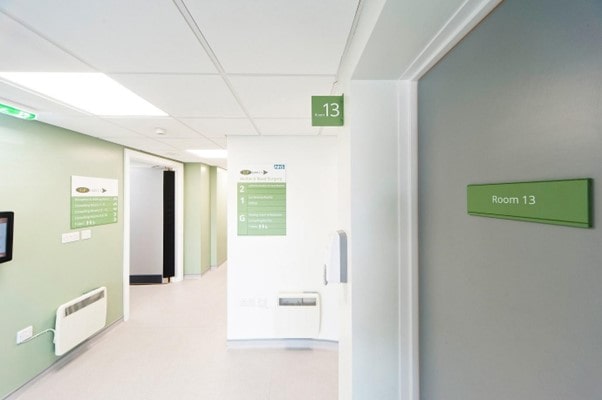
How Interior Design Can Have A Positive Influence Towards Morale In Healthcare Buildings
It is well-known that the atmosphere of healthcare buildings can significantly impact the morale and wellbeing of both staff and patients. Often, these environments can feel clinical and stark, increasing the stress experienced by patients and employees. However, a good healthcare interior designer can create a more positive and uplifting environment, improving morale and boosting healthcare outcomes.
There are several ways in which interior design in healthcare buildings can boost morale.
Ensuring Comfort
Waiting times are often a significant source of stress for patients in healthcare buildings! If the waiting area is not designed with comfort in mind, this can add to patient stress levels. However, a good healthcare interior designer will take into account the need for comfort and create a waiting area that is both functional and comfortable.
For example, providing comfortable seating can significantly impact patient satisfaction. Adequate seating ensures that patients can be comfortable while they wait and helps to create a sense of calm and reduce stress. In addition, comfortable chairs can improve overall physical well-being for patients with mobility issues or chronic pain.
Thoughtful consideration should be given to the number and layout of waiting area chairs and the level of comfort they provide. Such factors can help create a more positive patient experience and improve outcomes.
Reinforcing Positive Experiences
In healthcare settings, even the smallest detail can contribute to patient satisfaction and make the difference between a positive and a less positive experience. That includes interior design.
The use of bright, welcoming colours and ample lighting, for example, can improve the overall mood and impression of the space. This can help create a positive experience for patients who may otherwise not want to be there. Patients who are in a better mood are more likely to follow instructions and comply with their treatments. This, in turn, can lead to better health outcomes.
Creating A Relaxing Atmosphere
The design of the waiting rooms and treatment spaces can significantly impact patient comfort. Patients who feel at ease in their surroundings are more likely to attend scheduled appointments and less likely to discharge themselves prematurely.
Elements such as comfortable furniture, natural lighting, and soothing colours can create a calming environment. In contrast, a cluttered or sterile environment may increase feelings of anxiety and stress.
Creating a pleasant atmosphere within healthcare facilities improves patient satisfaction and leads to better outcomes and decreased medical costs. Thus, attention should be given to the design of these spaces to enhance the overall healthcare experience.
Interior Design In Healthcare Buildings: Final Thoughts
Interior design can have a positive influence on morale in healthcare buildings. By considering the needs of both staff and patients, healthcare interior designers can create functional and comfortable working environments. Using bright colours, ample lighting, and thoughtful furniture placement can help create a positive and relaxing atmosphere that will positively affect patient outcomes.
At DS Squared Architects, our team of healthcare interior designers are dedicated to creating spaces that facilitate positive outcomes for patients. If you are interested in learning more about our approach to healthcare interior design, we invite you to contact us. We would be happy to discuss your specific needs and how we can help you create a more positive and effective healthcare environment.


.png?width=400&height=200&name=BOOK%20A%20CONSULTATION%20-%20DS%20Squared%20(1).png)
